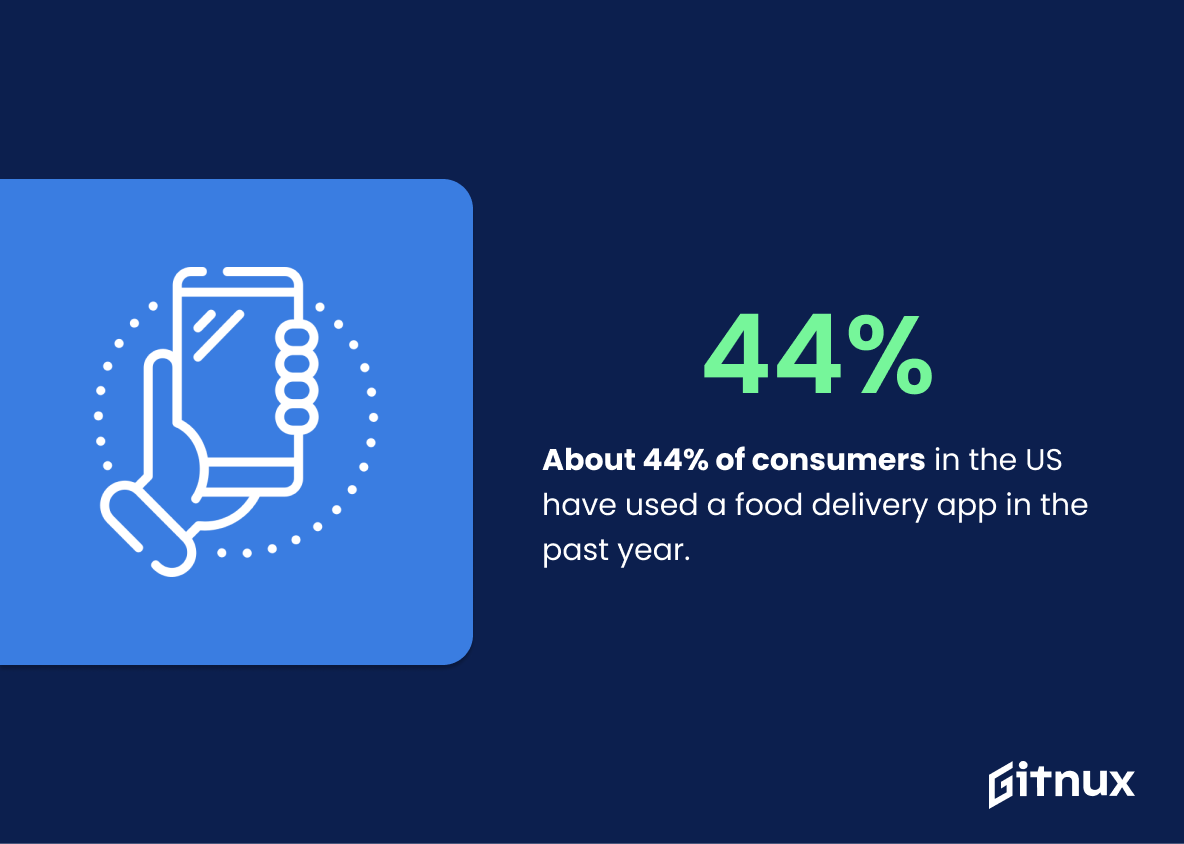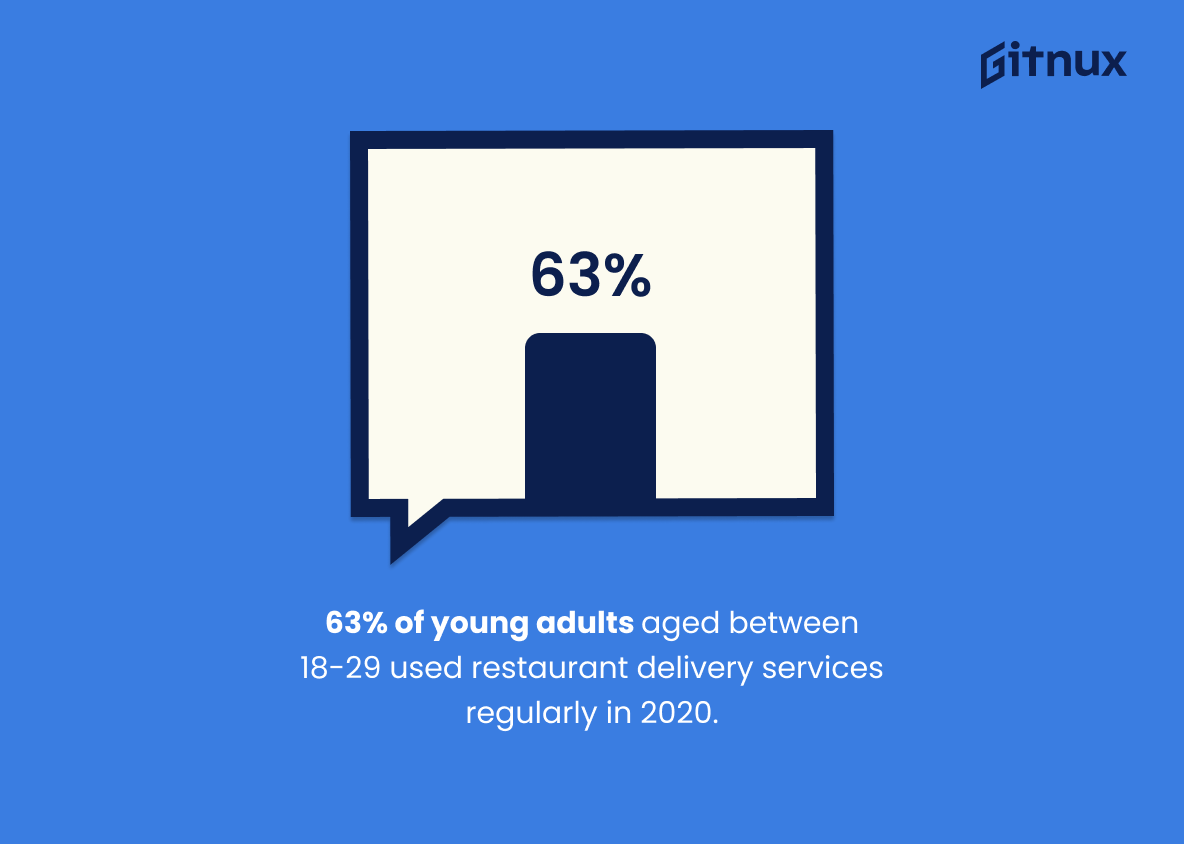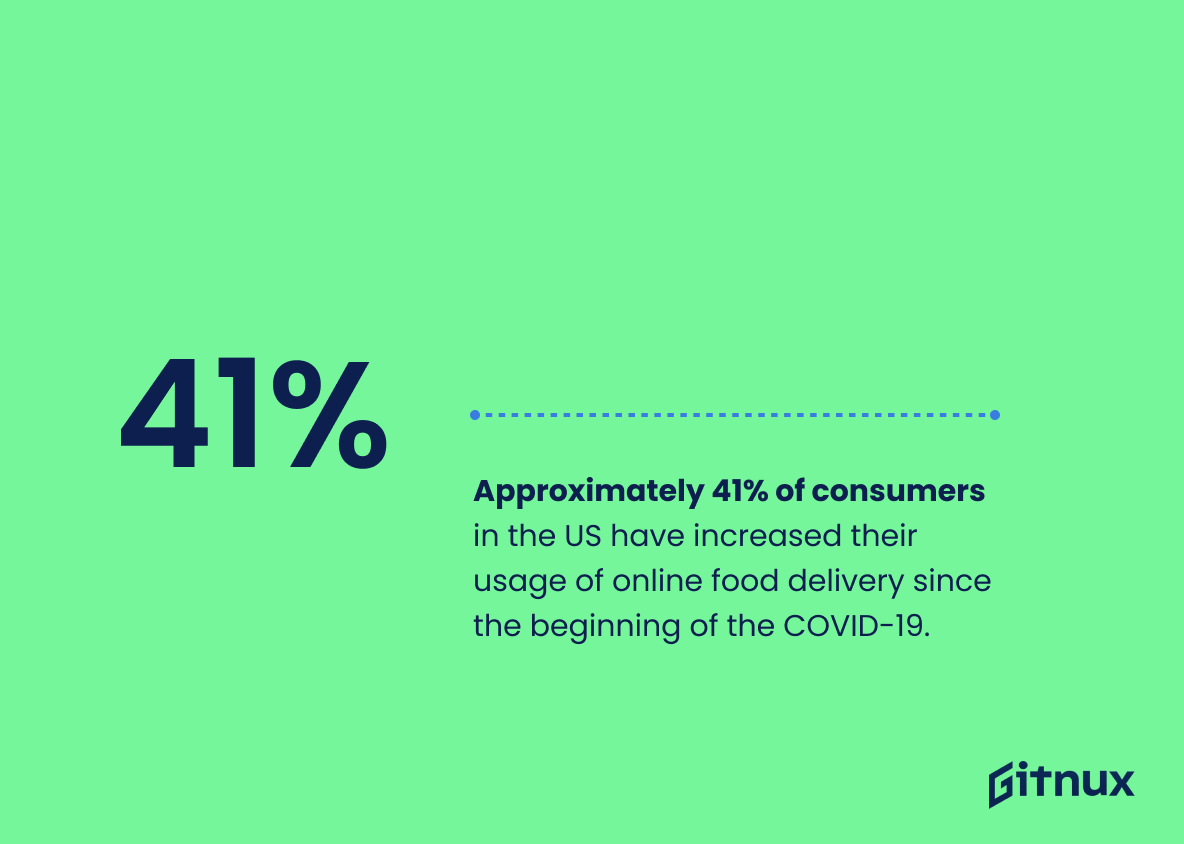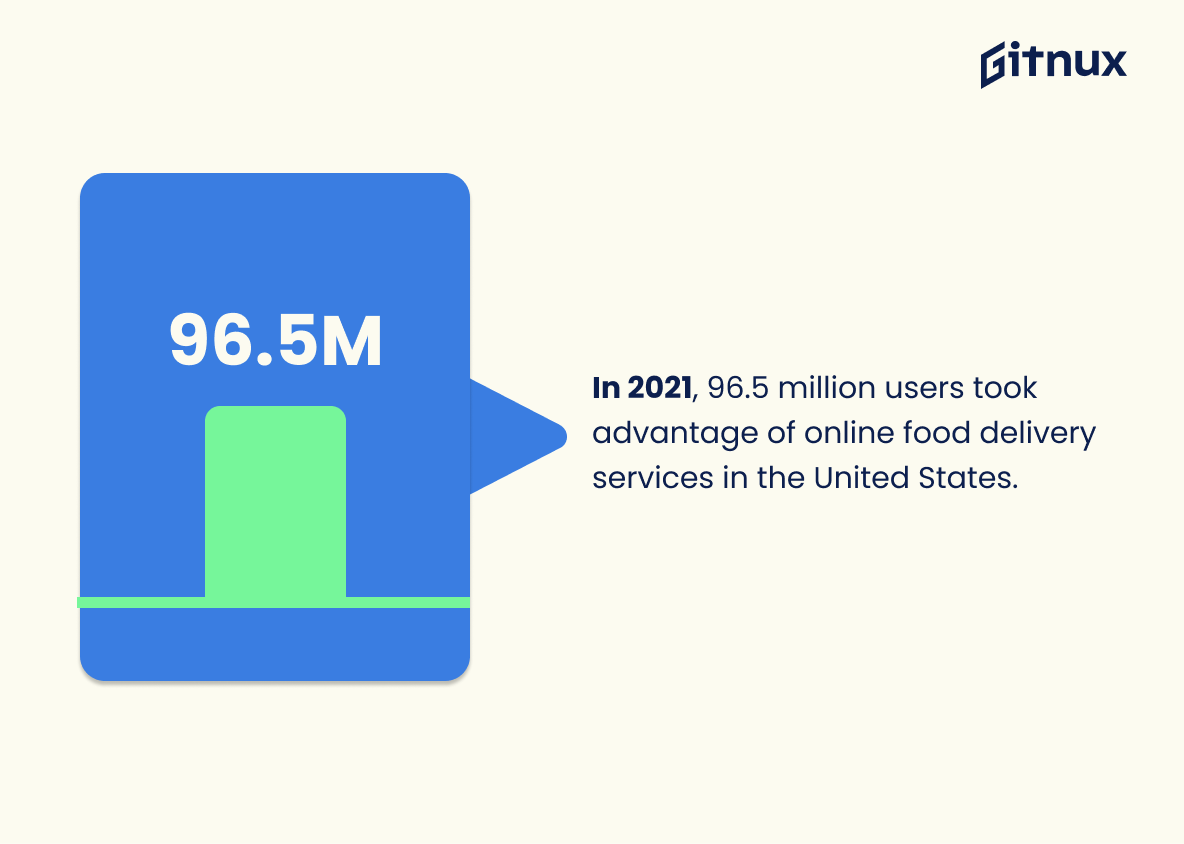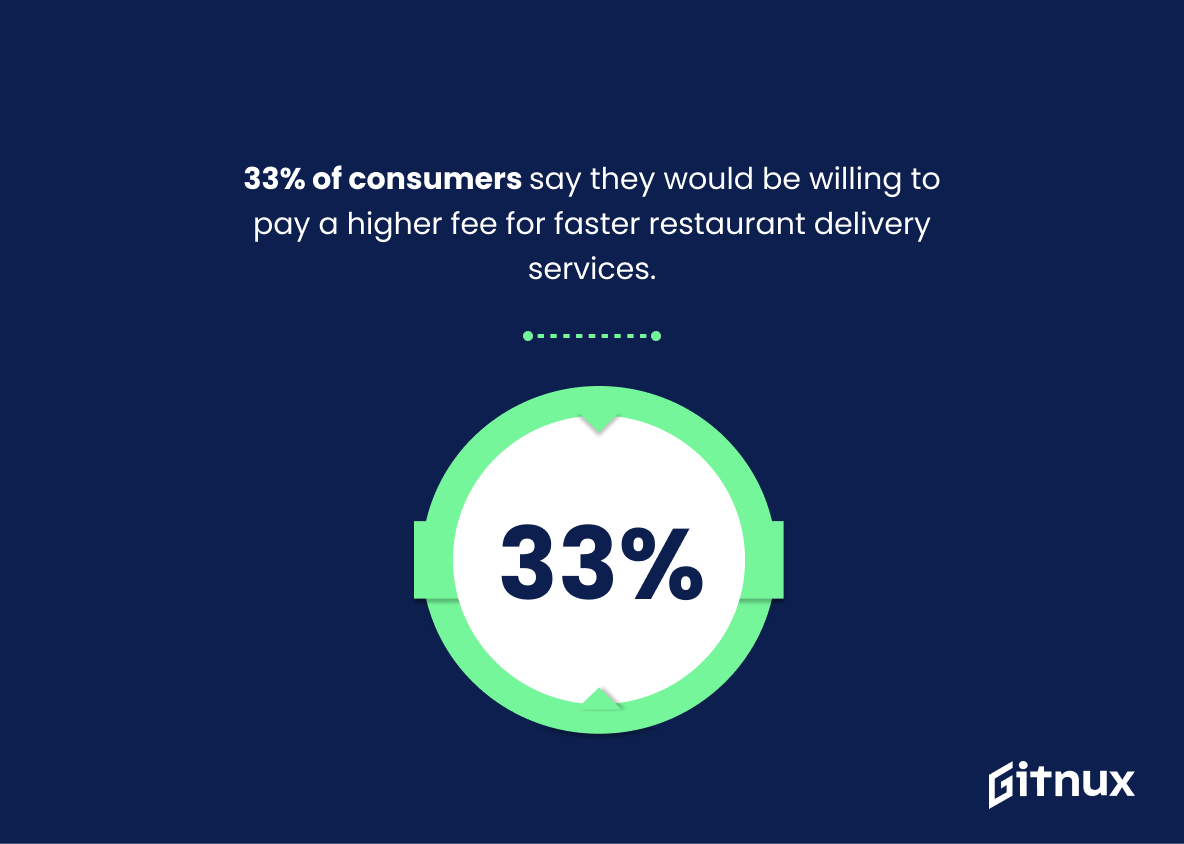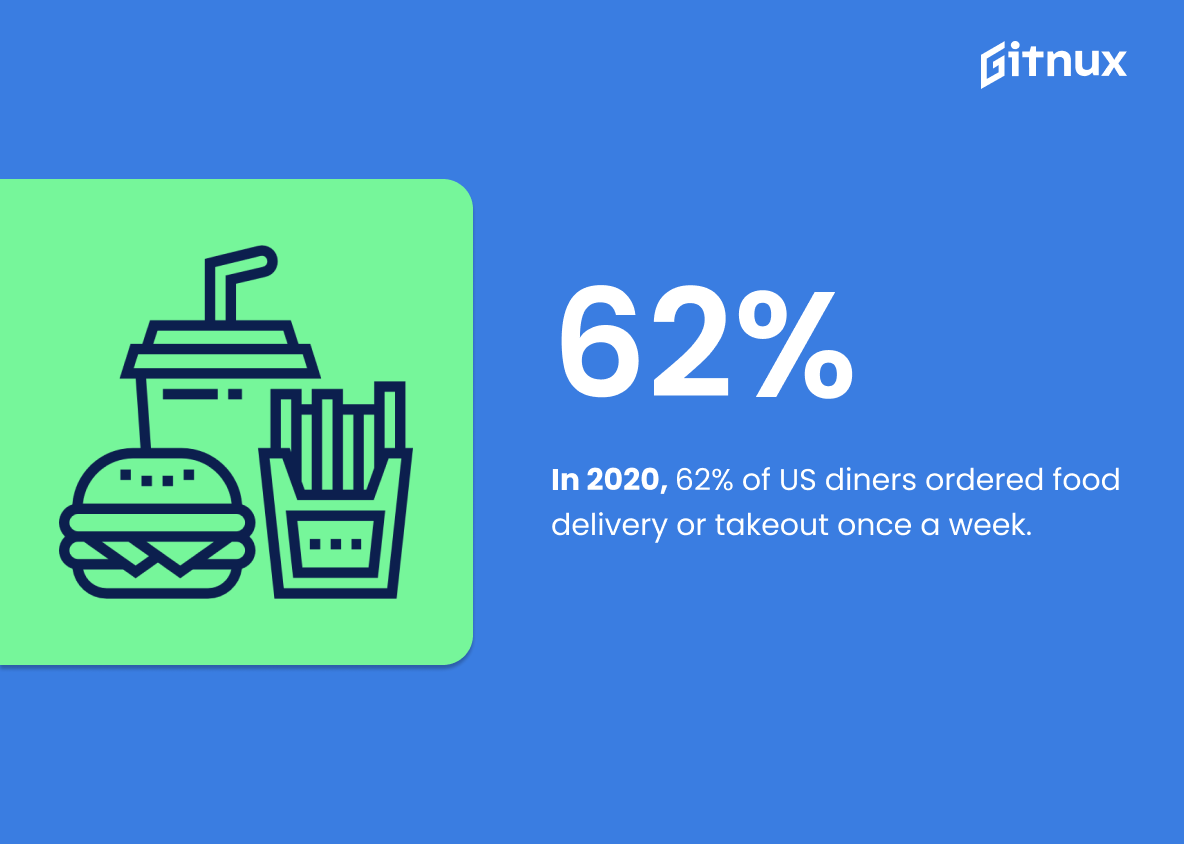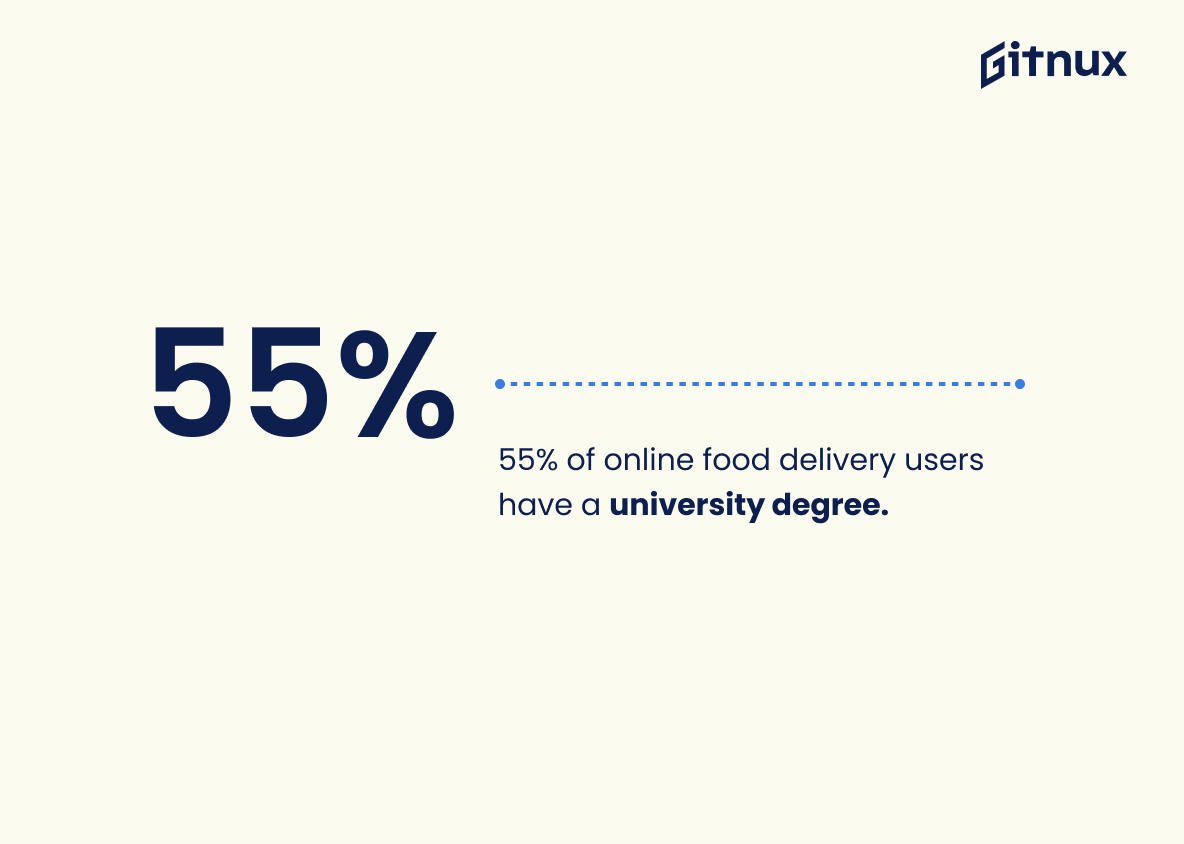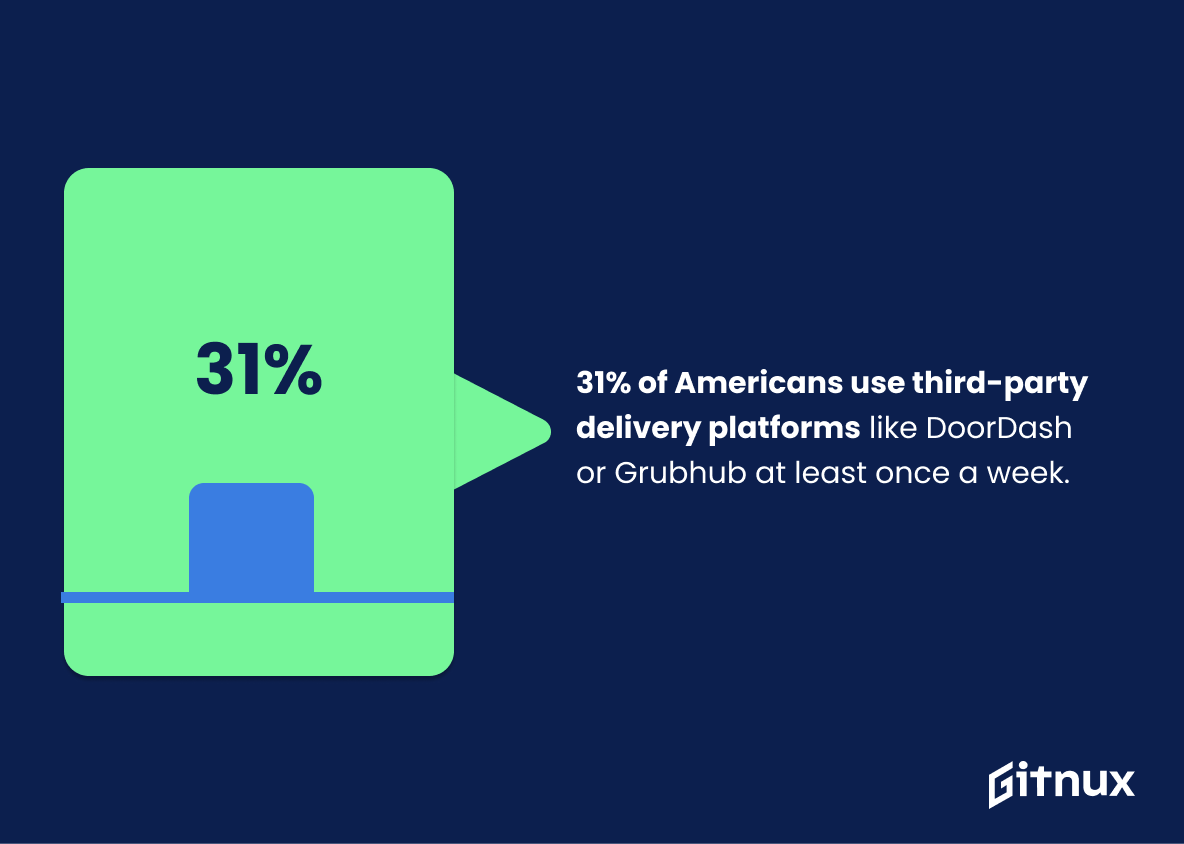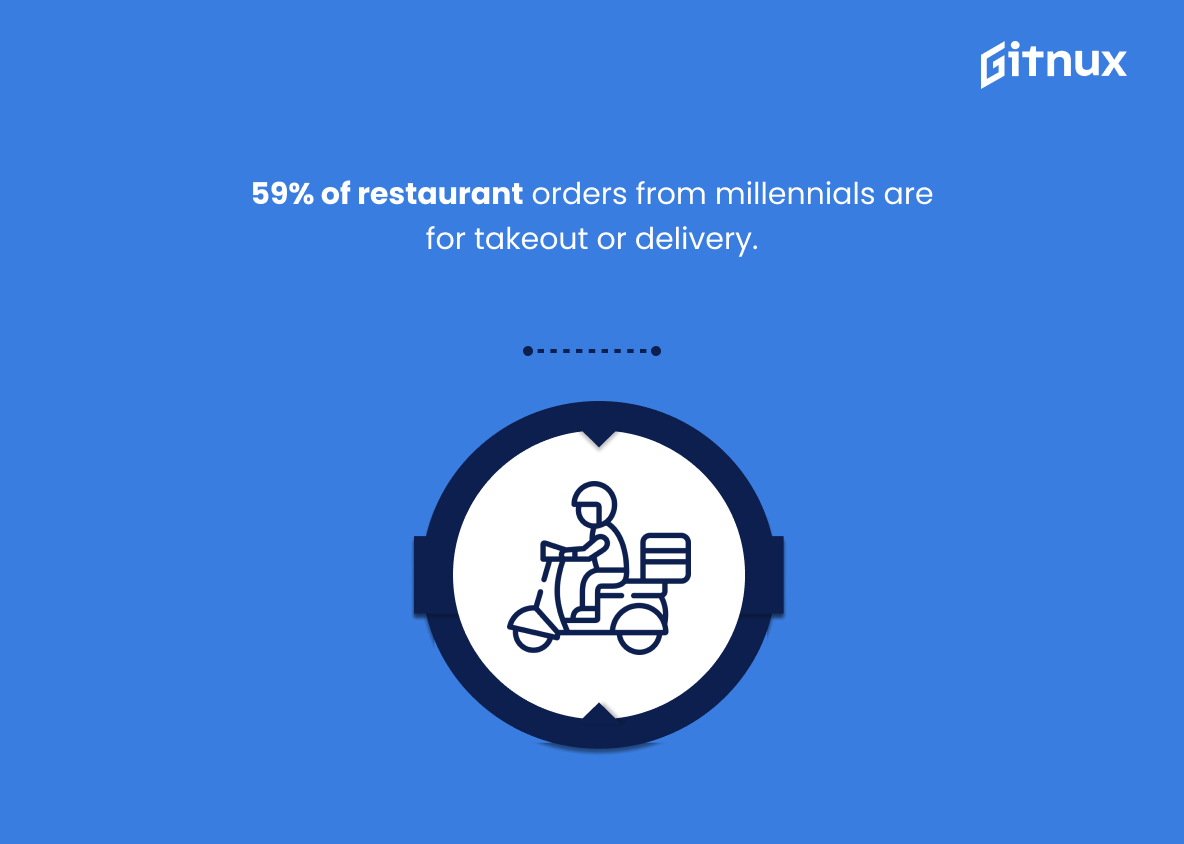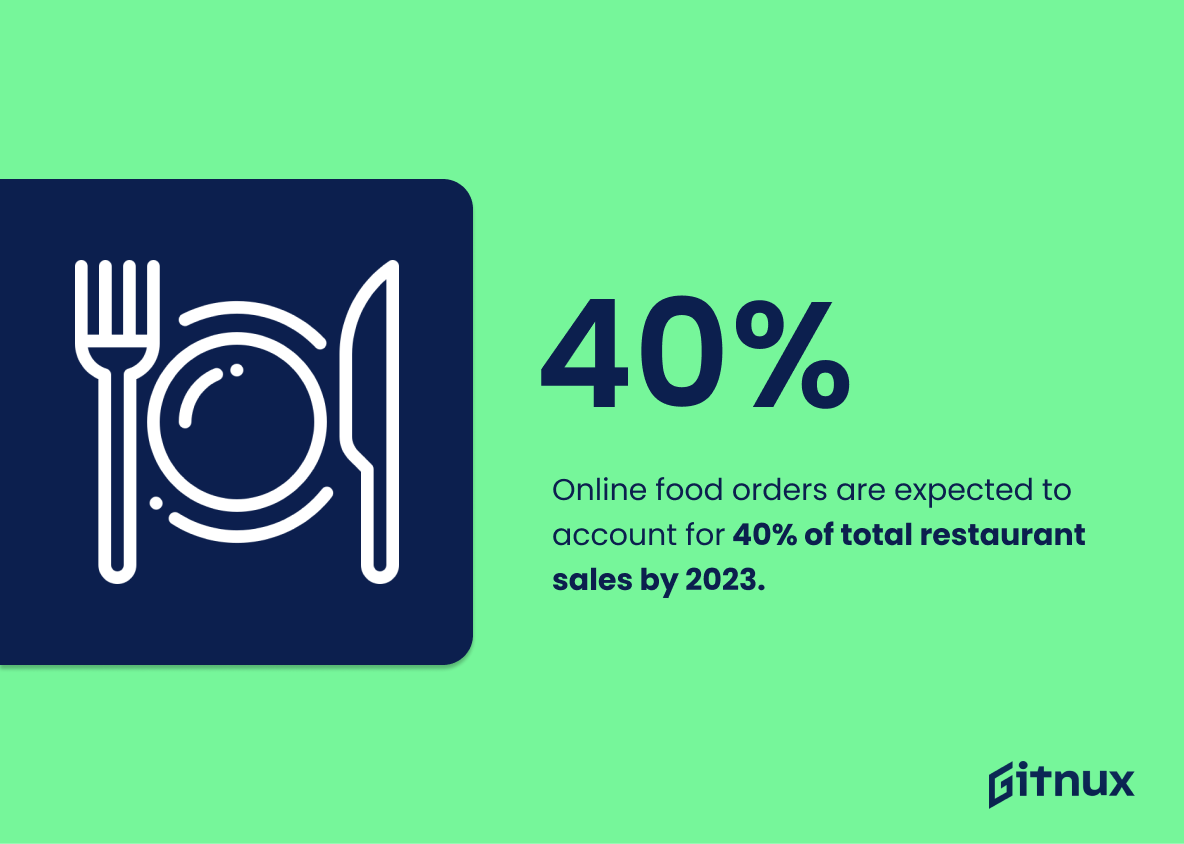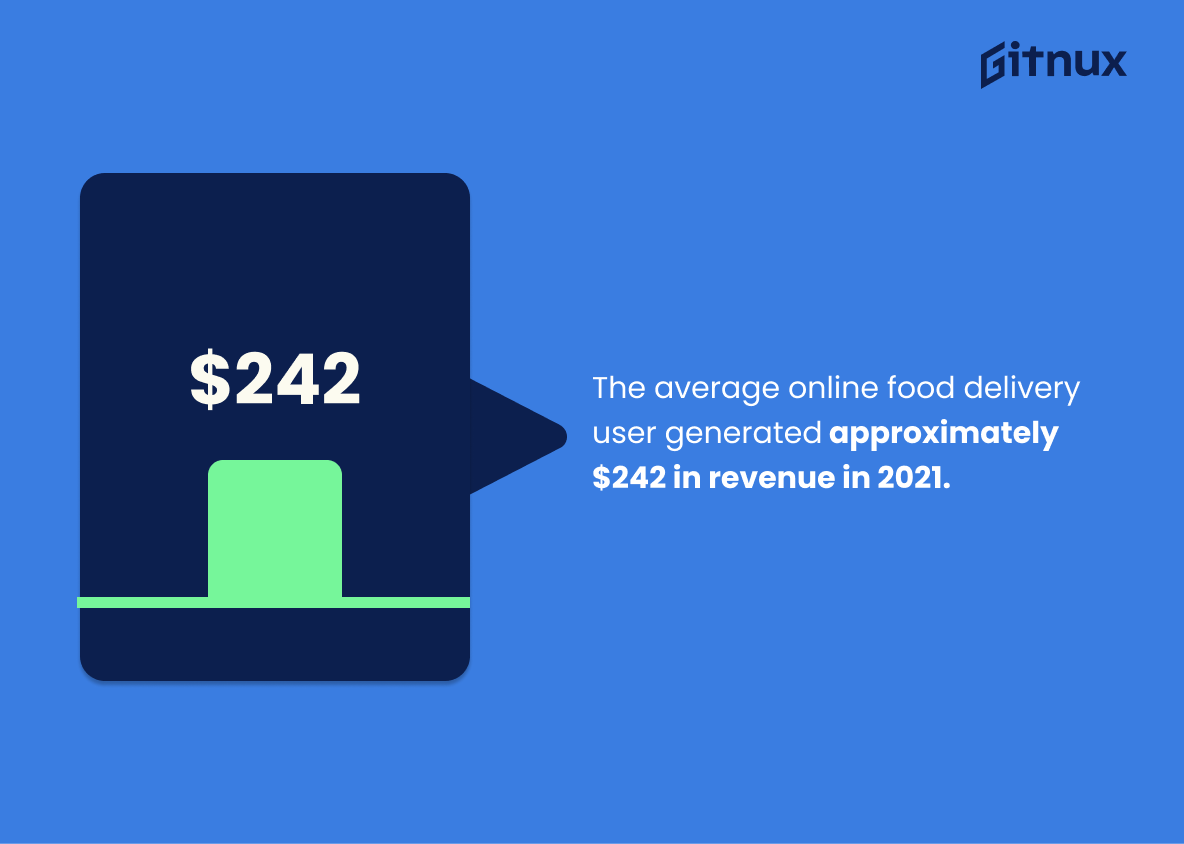The online food delivery industry has seen tremendous growth in recent years, with the market revenue expected to reach $142.9 billion by 2024 and an annual growth rate (CAGR 2021-2024) of 7.1%. This is due to a number of factors such as increased convenience for consumers, higher demand from young adults aged 18-29 who use restaurant delivery services regularly, and more people turning to online ordering during the COVID-19 pandemic.
In 2020 alone, 96.5 million users took advantage of these services in the United States while 33% said they would be willing to pay a higher fee for faster restaurant delivery services. Additionally, 62% of US diners ordered food delivery or takeout once a week that year and 59% of orders from millennials were for takeout or delivery according to research conducted by Business Wire in 2017.
Furthermore, DoorDash holds 50% share of third party food deliveries in the US as per Second Measure’s data collected till February 2021 while India’s online food service market is projected at 30 percent CAGR until 2026 according to TechSci Research report published last year . The average age group using this service was 25–34 accounting 40%, followed closely by 34–44 which accounted 37%. Moreover 65 %of operators agreed that offering deliver generated incremental sales whereas 64 %of people between 18 – 24 are willing order their meals through apps because it provides ease &convenience . On top ,the average user generates approximately 242$ worth revenue annually making it one lucrative business model today.
This statistic is a testament to the immense potential of the online food delivery market. It shows that the industry is growing rapidly and is expected to continue to do so in the coming years. This is an important point to consider when discussing online food delivery statistics, as it demonstrates the potential for businesses to capitalize on this trend.
The online food delivery segment has a projected annual growth rate (CAGR 2021-2024) of 7.1%.
This statistic is a testament to the increasing popularity of online food delivery services. It indicates that the industry is growing at a rapid rate, and is likely to continue to do so in the coming years. This is an important piece of information for anyone interested in the online food delivery industry, as it provides insight into the potential for growth and success.
Online Food Delivery Statistics Overview
About 44% of consumers in the US have used a food delivery app in the past year.
This statistic is a telling indication of the growing popularity of online food delivery services. It shows that almost half of US consumers have embraced the convenience of ordering food online, making it a mainstream option for meals. This statistic is an important piece of information for anyone interested in the online food delivery industry, as it provides insight into the current market size and potential for growth.
63% of young adults aged between 18-29 used restaurant delivery services regularly in 2020.
This statistic is a telling indication of the growing popularity of restaurant delivery services among young adults. It highlights the fact that online food delivery is becoming an increasingly popular option for those in the 18-29 age bracket, suggesting that the industry is likely to continue to grow in the coming years. This is an important point to consider when discussing the overall state of the online food delivery industry.
Approximately 41% of consumers in the US have increased their usage of online food delivery services since the beginning of the COVID-19 pandemic.
This statistic is a powerful indicator of the impact the COVID-19 pandemic has had on the online food delivery industry. It shows that the demand for online food delivery services has skyrocketed since the pandemic began, with nearly half of all consumers in the US turning to these services for their food needs. This statistic is a valuable insight into the current state of the online food delivery industry and can be used to inform decisions about how to best serve customers in this rapidly changing landscape.
In 2021, 96.5 million users took advantage of online food delivery services in the United States.
This statistic is a powerful indicator of the immense popularity of online food delivery services in the United States. It shows that a huge number of people are taking advantage of the convenience and ease of ordering food online. This statistic is an important piece of information for anyone interested in the online food delivery industry, as it provides insight into the current market size and potential for growth.
33% of consumers say they would be willing to pay a higher fee for faster restaurant delivery services.
This statistic is indicative of the fact that consumers are increasingly valuing convenience when it comes to food delivery services. It shows that customers are willing to pay a premium for faster delivery, which could be a major factor in the success of online food delivery services.
In 2020, 62% of US diners ordered food delivery or takeout once a week.
This statistic is a powerful indicator of the growing popularity of online food delivery services. It shows that more and more people are turning to these services to satisfy their cravings for restaurant-quality meals without having to leave the comfort of their own homes. This trend is likely to continue as people become more accustomed to the convenience and safety of ordering food online.
The average age of an online food delivery user is 34 years.
This statistic is significant in the context of a blog post about Online Food Delivery Statistics as it provides insight into the demographic of people who are using online food delivery services. Knowing the average age of users can help businesses better understand their target market and tailor their services accordingly.
55% of online food delivery users have a university degree.
This statistic is indicative of the fact that online food delivery services are being utilized by a highly educated demographic. This is important to note in a blog post about Online Food Delivery Statistics, as it provides insight into the type of people who are using these services. It also suggests that online food delivery services are becoming increasingly popular among those with a university degree, which could be a valuable piece of information for businesses looking to target this demographic.
31% of Americans use third-party delivery platforms like DoorDash or Grubhub at least once a week.
This statistic is a telling indication of the growing popularity of online food delivery platforms. It shows that a significant portion of Americans are relying on these services to get their meals on a regular basis. This highlights the importance of online food delivery services in today’s society and the potential for businesses to capitalize on this trend.
59% of restaurant orders from millennials are for takeout or delivery.
This statistic is a telling indication of the growing trend of millennials opting for takeout or delivery when it comes to restaurant orders. It highlights the importance of online food delivery services in catering to the needs of this generation, and serves as a reminder of the potential of this market.
Online food orders are expected to account for 40% of total restaurant sales by 2023.
This statistic is a clear indication of the growing importance of online food orders in the restaurant industry. By 2023, it is projected that online food orders will account for a significant portion of total restaurant sales, highlighting the need for restaurants to embrace digital ordering platforms in order to remain competitive. This statistic is a powerful reminder of the changing landscape of the restaurant industry and the need for restaurants to stay ahead of the curve.
The online food delivery services market in India is projected to grow at a CAGR of 30% by 2026.
This statistic is a testament to the immense potential of the online food delivery services market in India. It highlights the fact that the industry is growing at an exponential rate and is likely to continue doing so in the foreseeable future. This is an important point to consider when discussing online food delivery statistics, as it provides insight into the current and future state of the industry.
By 2023, online dinner delivery revenue is expected to show an annual growth rate (CAGR 2021-2023) of 4.4% in the United States.
This statistic is a crucial indicator of the potential of online dinner delivery services in the United States. It shows that the market is growing steadily and that there is a great opportunity for businesses to capitalize on this trend. This statistic is especially important for those looking to invest in the online food delivery industry, as it provides a clear indication of the potential for growth and profitability.
The average online food delivery user generated approximately $242 in revenue in 2021.
This statistic is a testament to the success of online food delivery services in 2021. It shows that customers are increasingly turning to these services to satisfy their cravings, and businesses are reaping the rewards. This statistic is a great indicator of the potential of online food delivery services and can be used to inform decisions about how to best capitalize on this growing trend.
65% of restaurant operators agreed that offering delivery has generated incremental sales for their restaurants.
This statistic is a testament to the power of online food delivery services in driving sales for restaurants. It shows that the majority of restaurant operators have seen an increase in sales due to offering delivery, indicating that this is a viable option for restaurants looking to expand their reach and increase their profits.
More than 64% of people aged 18-24 are willing to order food online due to the ease and convenience of it.
This statistic is a testament to the power of online food delivery services, as it shows that the majority of young people are taking advantage of the convenience and ease of ordering food online. This is an important statistic to consider when discussing the impact of online food delivery services, as it demonstrates the popularity of the service among the younger demographic.
In 2020, most online food delivery users belonged to the age group of 25-34 years, accounting for 40% of users.
This statistic is a telling indication of the popularity of online food delivery services among the 25-34 age group. It highlights the fact that this age group is the most active user base of online food delivery services, making up a significant portion of the total user base. This information is important for businesses to consider when developing strategies to target and engage this demographic.
Conclusion
The online food delivery market is growing rapidly, with revenue expected to reach $142.9 billion in 2024 and a projected annual growth rate (CAGR 2021-2024) of 7.1%. This trend has been further accelerated by the COVID-19 pandemic, as 41% of consumers have increased their usage since its onset. In 2021 alone, 96.5 million users took advantage of these services in the United States and 33% are willing to pay higher fees for faster restaurant delivery services.
Young adults aged 18-29 use restaurant delivery services regularly at 63%, while millennials account for 59% of takeout or delivery orders from restaurants overall. The average age of an online food delivery user is 34 years old and 55% have a university degree; both figures demonstrate that this service appeals to educated individuals who value convenience over other factors when ordering meals outside the home environment.
In India specifically, the online food delivery market is projected to grow at a CAGR 30%, while DoorDash holds 50% share in third party deliveries within US borders – generating approximately $242 per user on average throughout 2021 so far – proving it’s one of most popular options among customers today due mainly to ease and convenience offered by such platforms . Finally, 65 %of operators agree that offering such service generates incremental sales for their businesses which will likely continue into 2023 where 40 %of total restaurant sales are estimated come from digital orders according customer preferences towards off premises dining experiences .
References
0. – https://www.qsrmagazine.com
1. – https://www.usfoods.com
2. – https://www.nrn.com
3. – https://www.zippia.com
4. – https://www.prnewswire.com
5. – https://www.upserve.com
6. – https://www.techsciresearch.com
7. – https://www.statista.com
8. – https://www.restaurant.org
9. – https://www.businesswire.com
